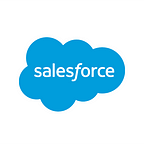How AI is Transforming Forecasting for the Better
Hernán Asorey, SVP of Data Science, Salesforce
Just as big data and artificial intelligence (AI) pervade many aspects of how we work, it’s doing the same for sales forecasting. However, it will take both the human and technological sides working together to achieve true success. Here are a few ways we can make that happen.
Create honest pipelines.
You don’t need an AI expert to point out that a cloudy pipeline can lead to forecasting errors. It’s to the detriment of a company to over-promise or under-deliver potential, so data and day-to-day operations should be seen throughout the sales organization throughout the entire quarter. Visibility and accuracy create predictability and accountability.
View forecasting as a science.
Forecasting should be treated for what it really is: a science. There is a discipline and rigor to forecasting that can only come when you use data and facts to come to a conclusion. In this case, the conclusion is the result of the end of the quarter or year. The beauty of using AI and a scientific attitude to come to your conclusion is that you can use data-driven rationale to explain how you found your result. And this way, if you fail, you learn. In the next sales cycle, that “miss” will be corrected. By truly embracing data science, forecasting can become the accurate measurement and lever of growth for your business that it was always meant to be.
Commit to AI.
AI is reshaping how we learn from and leverage data — not just by accessing it, but by really digging into its importance — to create personalized customer experiences. In terms of forecasting, AI will transform how a company interacts with its own data for and from sales. AI is brutally honest. Let’s put it this way — it won’t hug you back. AI is without emotion and is unequivocal in its results; it tells you the cold, hard data truth. But it does need you to learn faster; it needs your guidance and input to amplify what data it has been given. You will need some patience for this type of tool as it learns about your business, but the reward is incredible: AI does not forget. Data and coaching will only make it better and better.
Verify the hunch.
For every potential deal, sales reps have a hunch. It’s the hunch of how it’s going to play out, which can be spot on or very far off. The emotions of a sale are still important in forecasting, but they need to be addressed in a new way. Instead of just running on instinct, forecasting must also contain logical variables that can be replicated and explained. If a sales rep or leader feels strongly about the deal, it’s time to take an objective look with AI as the forecasting tool. Leveraging the human element to augment what AI predicts is key to accelerate learning.
Take the plunge.
Adopting a new approach to forecasting may seem daunting — or maybe even unnecessary. But there will come a time when they’re forced to make a change. That’s certainly what happened with Salesforce when we missed internal sales goals. We had to troubleshoot our own forecasting and create the technology needed to ensure such a thing never happened again. To be honest, not everyone was on board at first. But, once they started seeing the results of AI and how predictable and accurate it was, they soon realized there was no turning back.
To read the complete article, “How AI Is Transforming Forecasting for the Better,” visit Quotable.com.
